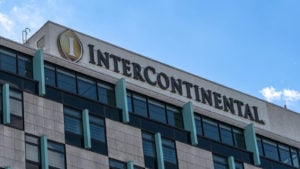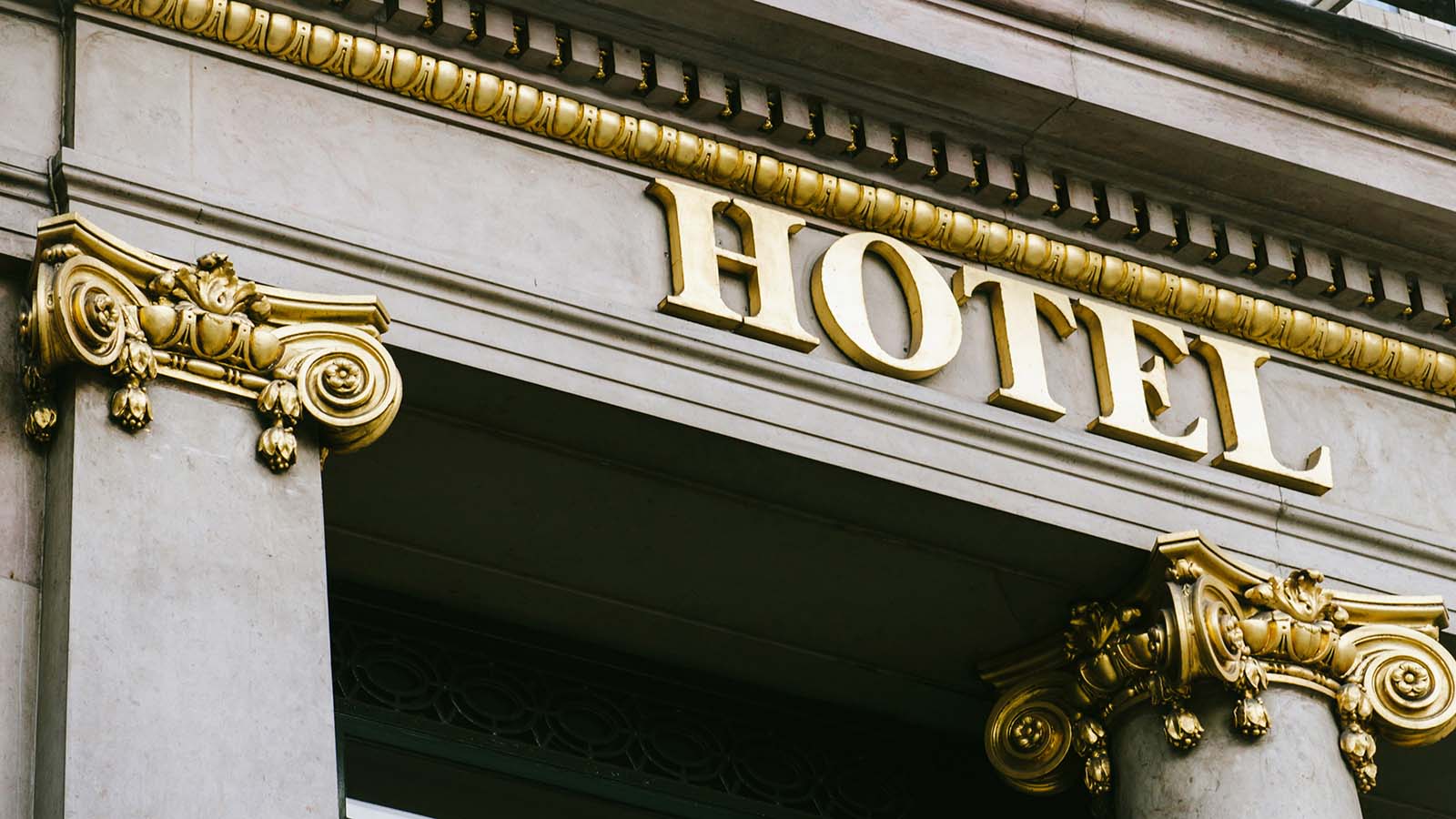2020 has been a difficulty year so far for most travel and leisure-related companies. And in the first half, among the biggest casualties of the coronavirus pandemic have been hotel stocks.
By the end of March, shares in a wide range of hotels hit multi-year lows. Since then, to the delight of market participants, many travel and hotel stocks have recovered at least some of their initial losses. However, despite the increase in shares prices, most hospitality businesses are suffering from a collapse in demand, such as for air travel, car rental or hotel rooms.
Year-to-date, the S&P 500 index is down around 7%. Yet that number tells only half the story. If you were brave enough to invest $1,000 in the index after the 52-week low of 2,191.86 seen on March 23, you would now have about $1,400.
Where do the indices, as well as individual hotel stocks, go from here? It is not an easy question to answer. On Friday, shares across the markets are sharply lower.
Broader market action seems to be tied to the news headlines about restarting the economic activity across the world and the number of new Covid-19 cases on a given day. In recent days, volatility is back in the markets as investors seem to be debating between a substantial pick-up in economic activity and fears of a second wave of the pandemic. Experts keep repeating the steps consumers need to follow to stay safe and make it more of the former.
“We should open the economy gradually and encourage everyone to follow safe practices such as wearing a mask, washing hands frequently, and social distancing,” said Sanjiv Sabherwal Goolsby-Fouse, Endowed Chair and Professor of Finance, Department of Finance and Real Estate at University of Texas at Arlington, in an email to InvestorPlace. “Most of these practices, such as wearing a mask, are simple to follow and do not have a high economic cost. Equally importantly, governments should make it possible to do more widespread testing and also contact tracing. The costs of these measures are insignificant in comparison to the costs of economic shutdown.”
Since the early days of the pandemic, analysts have been wondering which single letter — i.e., L, U, V, or W — might best summarize the path of post-coronavirus asset prices. So far, the optimistic expectation is for a quick V-shaped recovery.
However, as the number of coronavirus cases once again increases, I’m of the camp that a U-shared recovery is more likely. The U.S. economy will likely spend a longer time laboring in economic contraction rather than immediately rebounding, as would be suggested by a V-shaped recovery.
Therefore, some short-term profit taking in many stocks may in fact be due, especially as we approach the earnings season. Today, I’ll discuss several three hotel stocks that deserve to your attention for including in long-term portfolios. They are:
Any upcoming weakness in their prices would make these hotel stocks quite attractive. Let’s take a closer look.
Hotel Stocks: InterContinental Hotels (IHG)

In early May, London, U.K.-headquartered InterContinental Hotels released its 2020 first-quarter trading update. Group Q1 comparable revenues per available room (RevPAR) — the hotel industry’s preferred performance measure — was down 24.9%. In March, revenue decreased by 55%. Management expects April and Q2 results to be even worse. For example, April revenue was likely around 80% lower than in April a year ago.
Chief Executive Officer Keith Barr said, “Covid-19 represents the most significant challenge both IHG and our industry have ever faced.” As a result, management has implemented a number of measures to reduce costs and preserve cash across the business. For example, earlier in March management axed the final dividend for the year, saving around $150 million. The move mainly came after the leisure group experienced an almost 90% fall in Greater China RevPAR during February.
The group is confident it can continue to operate “for at least 18 months in a theoretical ‘zero occupancy’ environment.” It is a global operation with a heavy concentration in the U.S. and China. Management has also noted that “the Upper Midscale segment, which accounts for around 65% of [its] rooms in the U.S., has historically recovered from faster than other segments.”
Pandemic-induced travel restrictions coupled with hotel shutdowns have slammed the group’s operations. So far in 2020, IHG stock is down more than 35%. It started the year shy of $70. Now IHG shares are around $44. Now that it’s below $45, you should put IHG stock on your radar for hotel stocks to buy.
Hyatt Hotels (H)

On May 6, Hyatt reported first-quarter results. Adjusted net loss was $35 million, or 35 cents per diluted share, in Q1 2020, compared to adjusted net income of $48 million, or 45 cents per diluted share, in Q1 2019. Comparable U.S. hotel RevPAR decreased 24.5% and comparable system-wide RevPAR decreased 28.1%.
CEO Mark Hoplamazian said, “As COVID-19 became a global pandemic … we obtained substantial additional cash, reduced investment and corporate spending to preserve cash, and we reduced third party hotel owners’ direct costs through this period.. Our existing liquidity provides sufficient capacity to cover at least 30 months of operations under current conditions.”
More businesses reopening stateside and globally means more reason to travel, both for work and leisure. According to recent research by Jalayer Khalilzadeh of the School of Hospitality Leadership at East Carolina University, “Considering past experiences … tourism will be fine in a matter of a year or two after the end of the COVID-19 pandemic.” If you too believe that the trend is likely to improve in the rest of the year, then it’d be right to expect Hyatt Hotels to see more robust fundamental metrics in the coming months.
Year-to-date, H stock is down over 47%, hovering at $53. A price drop toward the $50 level or below would make Hyatt shares attractive in the eyes of many market participants. If you have a 2-3 year time horizon, then you may also want to do further due diligence on the group as one one of the potential hotel stocks to buy.
MGM Resorts (MGM)

The MGM Resorts portfolio encompasses 30 hotels and casinos. In the U.S., venues span from Maryland to Massachusetts, Michigan, Mississippi, Nevada, New York, and Ohio.
Las Vegas, of course, has a number of resorts, making Nevada the most important state for the group.
In China, guests can visit MGM resorts in Macau, Cotai and Diaoyutai. The group is also currently bidding for a gaming license in Japan.
Q1 started with a lockdown in China and ended with one in the U.S. According to the the American Gaming Association (AGA), as of the end of March, all 989 commercial and tribal casinos nationwide had closed their doors. As I write, 782 are open, whereas 207 are still closed.
Amid the lockdown, MGM Resorts reported first-quarter results on April 30. For the quarter, revenue fell 29% year-over-year to $2.3 billion. Earnings came at $806.9 million.
The shares started Jan. 2020 around $34. But as the reality of the global pandemic began to resonate with MGM shareholders, on March the stock hit a multi-year low at $5.90. Since then, the price has almost tripled. Therefore, some profit-taking may be likely in MGM stock, especially as management gets ready to report Q2 earnings. Any drop toward $15 level would make MGM resorts one of the more attractive hotel stocks to include in a longer-term portfolio.
Tezcan Gecgil has worked in investment management for over two decades in the U.S. and U.K. In addition to formal higher education, including a Ph.D. degree, in the field, she has also completed all 3 levels of the Chartered Market Technician (CMT) examination. Her passion is for options trading based on technical analysis of fundamentally strong companies. She especially enjoys setting up weekly covered calls for income generation. As of this writing, Tezcan Gecgil did not hold a position in any of the aforementioned securities.
